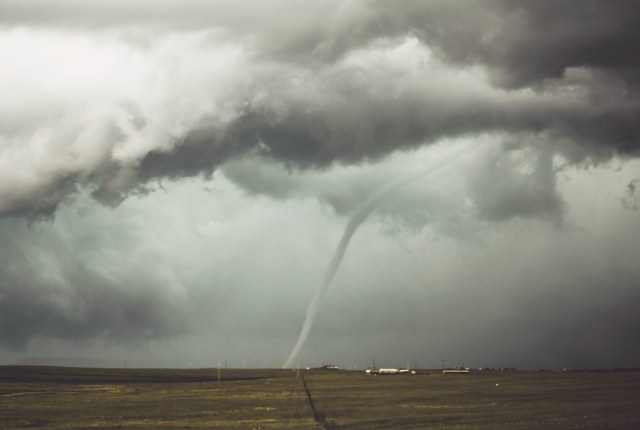The tornadoes that occur in Northern Italy, particularly in the Po Valley area, are formed at the confluence of three air masses having different characteristics and origins, with a dynamic similar to the one observed in the Great Plains in North America. This is the result of a study published in the Monthly Weather Review journal. The study involved researchers from the University of Bologna, the CNR Institute of Atmospheric Sciences and Climate, the University of Bari Aldo Moro and the University of Milan. The results could help to improve the prediction of these destructive phenomena.
"The proposed conceptual model, derived from an in-depth analysis of observations and numerical simulations, is inspired by the dynamics observed in the so-called 'Tornado Alley' in the United States. Here, tornadoes form at the confluence of moist air masses from the Gulf of Mexico, dry air masses from the Rocky Mountains, and colder air masses from Canada," explains Francesco De Martin, a PhD student at the "Augusto Righi" Department of Physics and Astronomy of the University of Bologna and first author of the paper. "In the case of the Po Valley, something similar can be observed, but on a much smaller scale."
Tornadoes over Northern Italy often form at a "triple point", where three air masses coming from different directions and with different characteristics - such as moist, dry, and colder air masses - meet. The researchers focused in particular on tornadoes that occur with a certain frequency between Lombardy and Emilia-Romagna. For example, they examined the tornado outbreak in September 2021, when seven tornadoes developed in a few hours, causing severe damage in numerous locations in the Po Valley. Four of these vortices were classified as F2 on the Fujita scale (which classifies tornadoes from 0, weak, to 5, devastating), while three were classified as F1.
Although the Po Valley is considered a hot spot for the development of tornadoes in Europe, due to the complex orography of the region where the Alps and Apennines modulate atmospheric flows in the lower layers, the sequence recorded was an unusual event, which prompted researchers to investigate the physical mechanisms that led to the formation of the vortices.
The results obtained could provide a better understanding of the dynamics that generate tornadoes and could help improve tornado forecasting, although they are still subject to a degree of uncertainty. Even today, it is impossible to know precisely if, where, and when a tornado will form, even within hours of an event.
"The study of ground observations during the event showed that tornadoes always developed within 20-30 kilometres of a dryline, i.e. a front of dry air descending from the Apennines, and close to a cold discontinuity caused by thunderstorms in the Alpine foothills," says Vincenzo Levizzani, research manager at CNR Isac. “At the same time, very humid south-easterly currents were blowing from the Adriatic Sea towards the Po Valley. Significantly, other thunderstorms that occurred in the Po Valley that day, but further away from the triple point, did not give rise to tornadoes."
A special feature of the study was the use of high-resolution numerical simulations with the MOLOCH meteorological model, developed at the Institute of Atmospheric Sciences and Climate in Bologna (CNR Isac), in order to simulate the supercells that generated the tornadoes.
"The model was able to correctly reproduce the development of tornadic supercells and the complex interaction of surface currents that emerged from the observations," adds Silvio Davolio, professor at the University of Milan and associated with CNR Isac.
"The model showed a marked rotation of the wind in the vicinity of the dryline as a function of altitude: from southeast near the ground to south-west above the first kilometre. This peculiar wind profile generated the vorticity that leads to the development of tornadoes," observes Mario Marcello Miglietta, professor at the University of Bari and research associate at CNR Isac. “In addition, a lot of moisture accumulated near the triple point, which increases the potential instability, which is another important element in the formation of these violent phenomena."
The study was published in the Monthly Weather Review under the title ‘A conceptual model for the development of tornadoes in the complex orography of the Po Valley'. Participating for the University of Bologna was Francesco De Martin, a PhD student at the 'Augusto Righi' Department of Physics and Astronomy.

